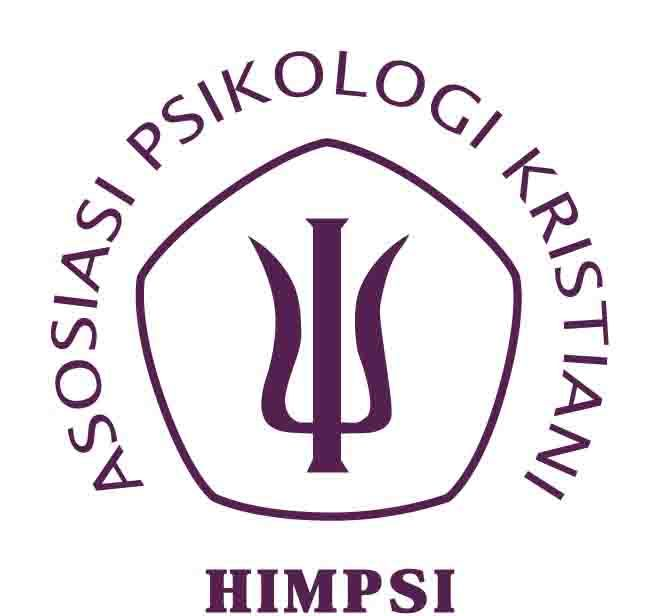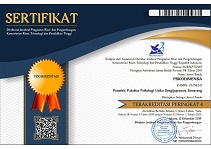Polri Performance: The Relationship to Achievement Motivation and The Working Environment
Abstract
Keywords
Full Text:
PDFReferences
Anoraga, P., & Suyatni, S. (2001). Psikolog industri dan sosial. Jakarta: PT. Dunia Pustaka Jaya.
As’ad, M. (2001). Seri ilmu sumber daya manusia. Yogyakarta: Liberty.
Astuti, Helmi, Rokhmat, Joni, & Sudirman. (2017). Pengaruh lingkungan kerja dan motivasi berprestasi terhadap kinerja guru Madrasah Ibtidaiyah di Kecamatan Aikmel Kabupaten Lombok Timur. Jurnal Ilmiah Profesi Pendidikan, 2 (1), 112-135.
Cahyono, Eko B. 2015. Pengaruh Lingkungan Kerja Terhadap Kinerja Karyawan Pada Industri Kecil Kerajinan Batik Sidomukti Desa Sidomukti Kecamatan Plaosan Kabupaten Magetan. Equilibrium, Volume 3, Nomor 2 (Juli 2015), 144-153.
Cummings, T.G. and E.S. Malloy: 1977, Improving Productivity and the Quality of Work Life (Praeger, New York).
Dharma, Agus. 2006. Manajemen Prestasi Kerja. Jakarta: Rajawali Pers.
Djiwandono. 2002. Pentingnya Motivasi Belajar. Jakarta: Raja Grafindo.
Ghozali, Imam, 2004. Analisis Multivariate Dengan Program SPSS. Semarang: Badan Penerbit Universitas Diponegoro.
Hofmann, D. A. & Jones, L. M. 2005. Leadership, collective personality, and performance. Journal of Applied Psychology, 3(90), 509–522.
Jordan, P. J., Ashkanasy, N. M., & Hartel, C. E. J. 2002. Emotional intelligence as a moderator of emotional and behavioral reaktions to job insecurity. Academy of Management Review, 3(27), 361-372.
Kahn, R.: 1981, Work and Health (Wiley, New York)
Lawler, E.E., III.: 1986, ‘Strategies for improving the quality of work life’, American Psychologist 37, pp. 486–493
Moekijat, 2009. Tata Laksana Kantor. Bandung: Mandar Maju.
Nitisemito, Alex S., 2000. Manajemen Personalia: Manajemen Sumber Daya Manusia. Jakarta: Ghalia Indonesia.
Riduwan, 2003. Skala Pengukuran Variabel-Variabel Penelitian. AlfaBeta, Bandung.
Rivai, Veithzal. 2004. Manajemen Sumber Daya Manusia Untuk Perusahaan. Jakarta: PT Raja Grafindo Persada.
Sedarmayanti, 2001. Sumber Daya Manusia dan Produktivitas Kerja. Bandung: Mandar Maju.
Sheppard, H.L. and N.O. Herrick: 1972, Where Have All the Robots Gone? Worker Dissatisfaction in the 70’s (The Free Press, New York).
Sirgy, M. J., Efraty, D., Siegel, P. & Lee, D. J. (2001). A new measure of quality of work life (QWL) based on need satisfaction and spillover theories. Social Indicators Research, 55(3), 241-302.
Sriharmiyati, Leni. 2018. Pengaruh Lingkungan Kerja Terhadap Kinerja Pegawai Kecamatan Magelang Utara. Jurnal Mahasiswa Administrasi Negara (JMAN), ISSN: 2222-3333, Vol. 02 No. 02 (Oktober 2018), 1-9.
Syafaruddin, 2002. Manajemen Mutu Terpadu dalam Pendidikan (Konsep, Strategi, dan Aplikasi). Jakarta: PT Grasindo.
Wijaya, Hendry. 2017. Pengaruh Lingkungan Kerja Terhadap Kinerja Pegawai Pada Instansi Pemerintah Daerah Kabupaten Musi Banyuasin (Studi Kasus Dinas Pertambangan dan Energi Kabupaten Musi Banyuasin). Jurnal Ecoment Global, ISSN: 2540-816X, Volume 2 Nomor 1 (Edisi Februari 2017), 40-50.
DOI: https://doi.org/10.24167/psidim.v19i2.2682
Print ISSN : 1411-6073 | online ISSN : 2579-6321 View My Stats

This work is licensed under a Creative Commons Attribution 4.0 International License.




















